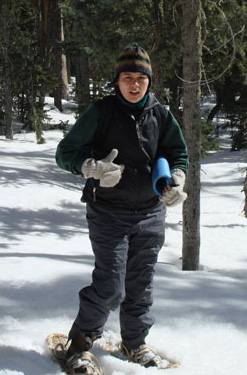Seafha Tuttle (Blount)
Response of the Mount Graham Red Squirrel (Tamiasciurus hudsonicus grahamensis) to Postfire Conditions
-
Time Period: 2006-2007 (field work) 2008-2012 (data analysis, writing, publication)
-
Location:Mt. Graham, AZ, U.S.A.
 Major Questions/Objectives: Our main objectives were to assess space use of Mount Graham red squirrels, vegetation characteristics associated with middens, and continued occupancy of middens, mountain-wide, by Mount Graham red squirrels in areas of various burn severity.
Major Questions/Objectives: Our main objectives were to assess space use of Mount Graham red squirrels, vegetation characteristics associated with middens, and continued occupancy of middens, mountain-wide, by Mount Graham red squirrels in areas of various burn severity.
Major Findings: A main effect of season on both size of home ranges and core areas was apparent. No main effect of burn severity on size of home range or size of core area was detected. Slope, canopy cover, burn severity, and aspect were important variables for distinguishing middens from random locations. Dead trees, aspect, and total number of trees were important for distinguishing between occupied and unoccupied middens. Mountainwide, occupancy of middens was influenced by burn severity of middens and surrounding vegetation. Also, unburned middens were occupied more continuously than burned middens.
